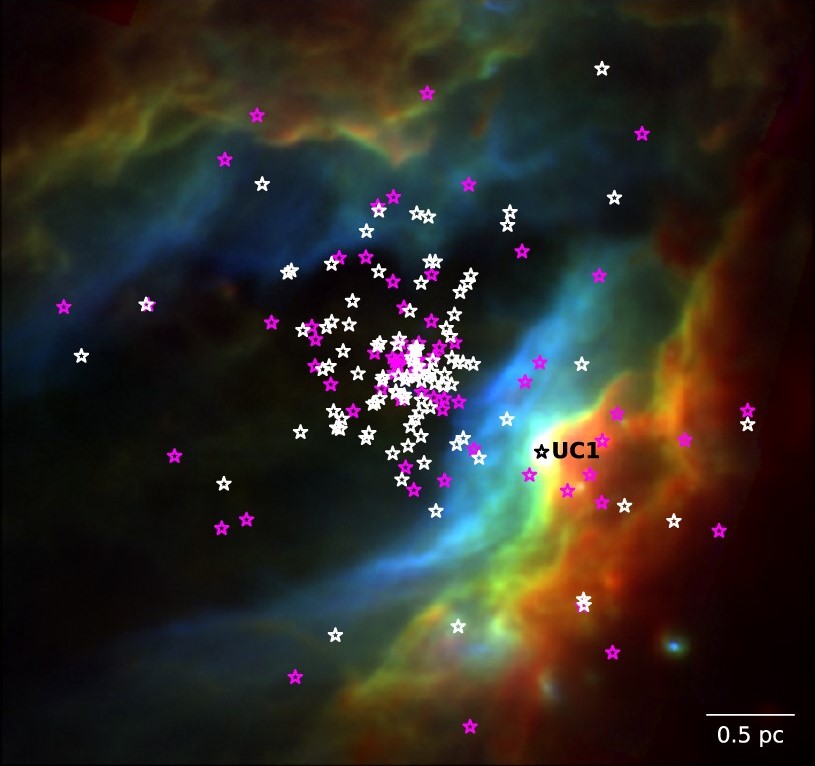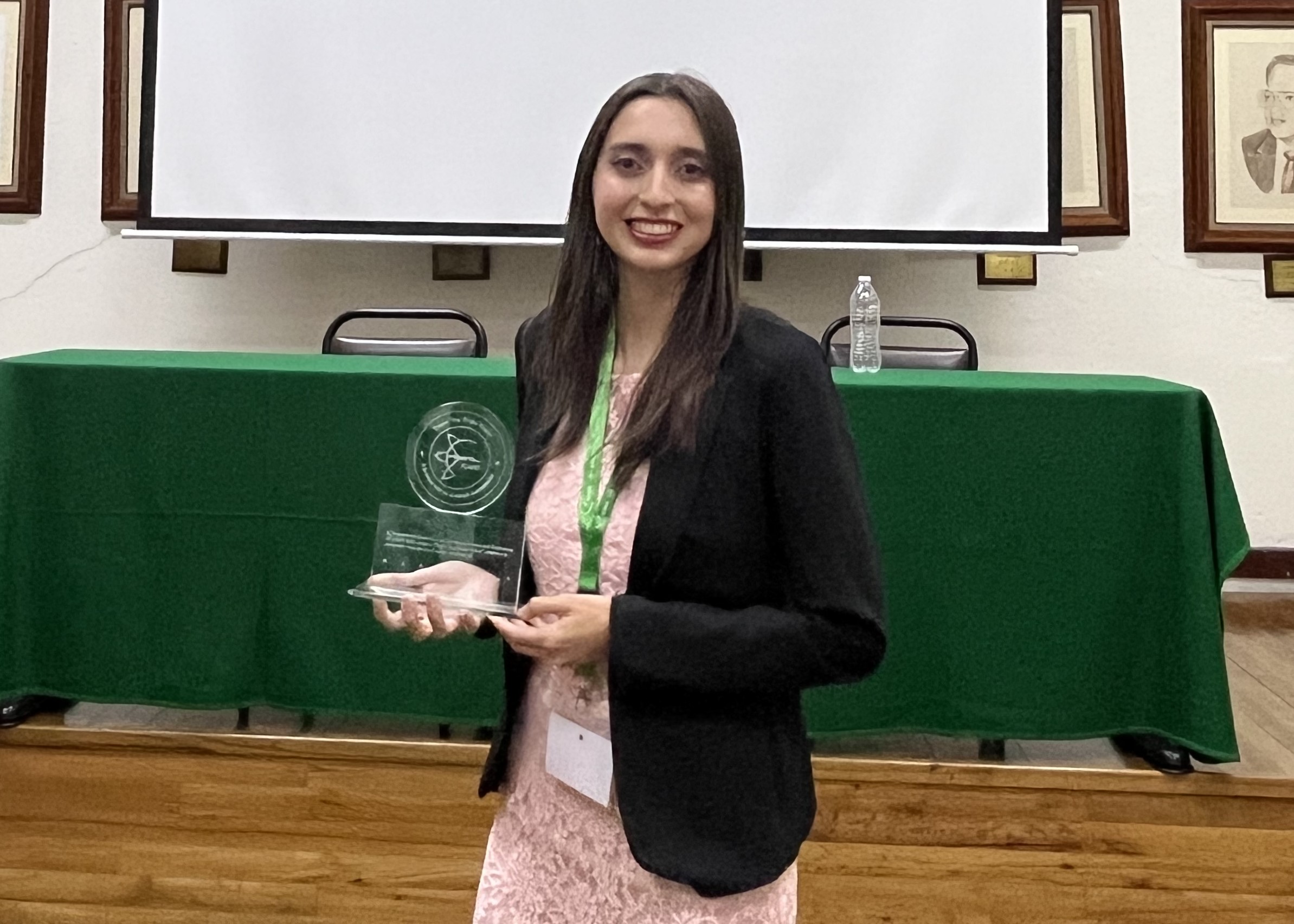Vanessa Yanza, an Astrophysics Ph.D. student at the Institute of Radio Astronomy and Astrophysics (IRyA) at UNAM, Campus Morelia, received on November 24 the “Ing. Sergio Viñals” prize for the best Master's thesis in the space field in Mexico, on behalf of the organizing committee of the International Conference on AeroSpace Science and Technology (ICASST) 2023.
“I felt very happy because I didn't expect it, even though we made an effort to do a very good work,” said Vanessa Yanza, when asked about her reaction to the announcement of this award. “The award called for theses defended over a wide range of time (3 years) and at the same time included various areas related to the space field, not only astronomy. So it was a delightful surprise to receive this prize.”
The award-winning thesis was developed in part during the Covid-19 pandemic at the University of Guanajuato (UG), and was directed by Dr. Josep Masqué of the UG and Dr. Sergio Dzib of the Max Planck Institute for Radio Astronomy (MPIfR), in Germany. “I feel very grateful to my advisors, to the jury that chose my thesis as the winner, to the UG and CONACyT, and to Mexico, for giving me the opportunity to be a Master in Astrophysics,” commented Vanessa Yanza.
In her research work, she studied the Omega Nebula, also called the Swan Nebula and known as Messier 17, in radio waves, using the Jansky Very Large Array observatory, located in New Mexico, United States. The research team observed 182 compact objects corresponding to stars being formed in this region. By comparing these newborn stars with those in other star-forming regions, such as the Orion Nebula, the team found that although there are three times as many objects in the Messier 17 region, the properties of these regions are similar.
In addition, the team discovered that the radio wave brightness of almost half of the objects in the region varies every few days, which could be due to activity in the corona of the new stars. The corona is the outermost layer of a star's atmosphere, and is composed of tenuous but very hot gas. These results were published in a research article in The Astronomical Journal.
Vanessa Yanza is currently expanding her research work, now as a Ph.D. student in Astrophysics at IRyA. “As a scientist, receiving this award vindicates the important role that women can play in science. It also recognizes the effort and dedication implied by doing good research, important for global science, that improves the visibility of the scientific work done in Mexico,” she concluded.

A star formation region in Messier 17, or the Omega or Swan Nebula, studied in this work. The colors correspond to images in infrared light obtained by the SOFIA and Herschel observatories. The star symbols represent the position of newly-formed stars detected in radio waves. Among them, the pink star symbols represent the position of objects whose radio brightness varies, in which activity is inferred in the corona of the newborn stars. Credits: Yanza et al. 2022, Lim et al. 2020 / JVLA, SOFIA, SOFIA-FORCAST, Herschel.
Research paper including the results of the award-winning thesis
The Population of Compact Radio Sources in M17
Vanessa Yanza et al., The Astronomical Journal 2022, 163, 6
https://iopscience.iop.org/article/10.3847/1538-3881/ac67ec
Vanessa Yanza’s career
Vanessa Yanza López obtained a degree in Physics Engineering in 2018 at the University of Cauca in Popayán, Colombia, where she is originally from, and then obtained a Master's degree in Astrophysics at the University of Guanajuato in 2020. She is currently a Ph.D. student in Astrophysics at IRyA UNAM, Campus Morelia, where she studies newly-formed stars in various regions of our galaxy, such as NGC 6334A in the “Cat’s paw” nebula, supervised by Dr. Sergio Dzib of the MPIfR and Dr. Aina Palau from IRyA.
About IRyA, UNAM
The Instituto de Radioastronomía y Astrofísica (IRyA), or Institute for Radioastronomy and Astrophysics is an academic unit at UNAM, Campus Morelia, Mexico. We perform high-level and high-impact research in the areas of interstellar medium, star formation, evolved stars, high energy astrophysics, Galactic dynamics and structure, extragalactic astronomy and cosmology. We contribute to the education of high-level human resources through a postgraduate program, and we have close contact with society through diverse outreach programs.
If you are interested in our Institute, visit the English version of our webpage, www.irya.unam.mx/web/en
Media contact:
Dr. René A. Ortega Minakata
Outreach and Science Communication
IRyA UNAM Campus Morelia
Text: IRyA UNAM
Photos: Vanessa Yanza





